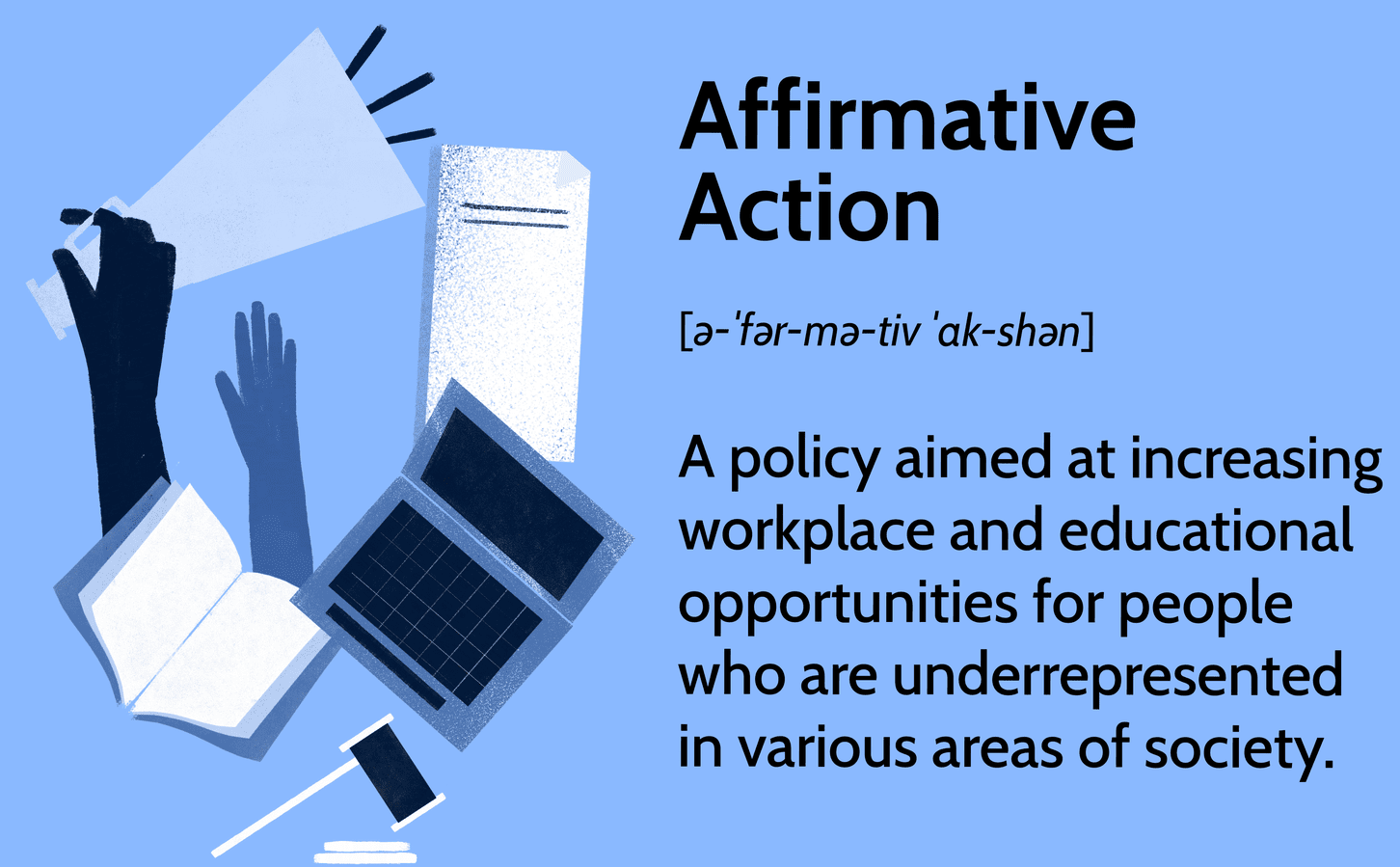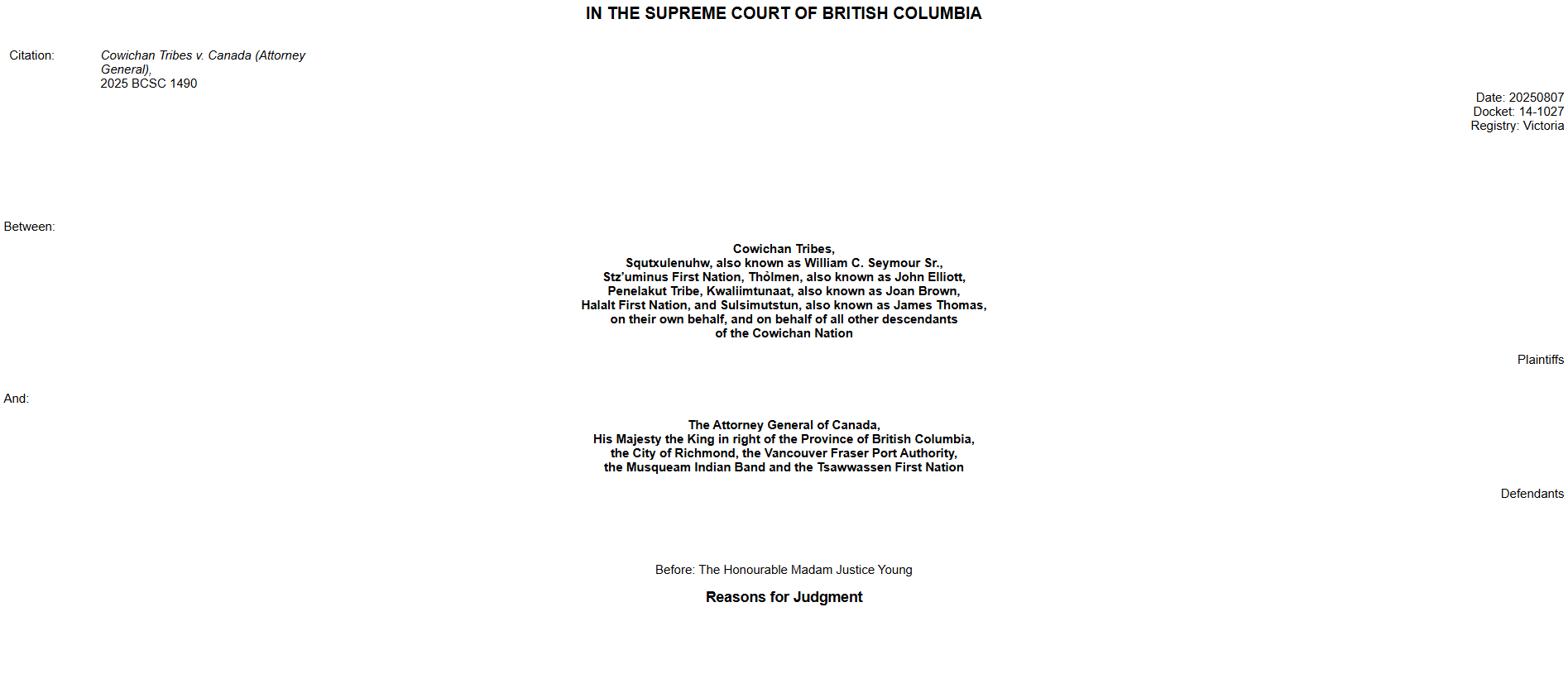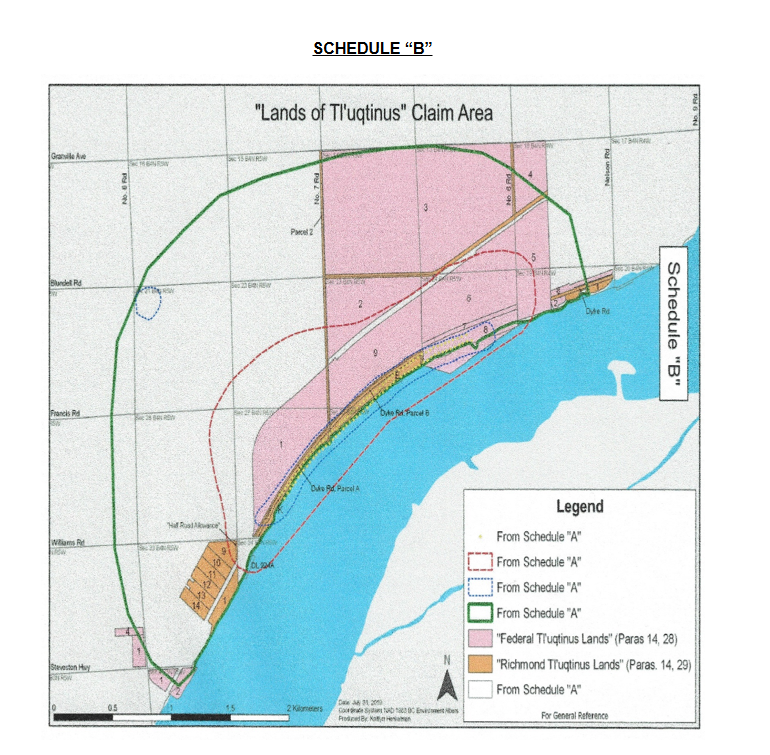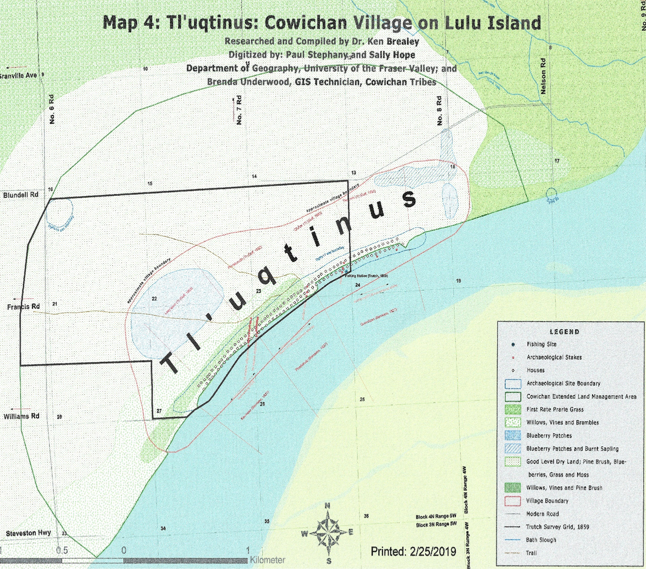The B.C. government is appealing the landmark ruling handed down by the clearly conflicted Barbara M. Young. AG Niki Sharma said the B.C. government strongly disagrees with the decision. “British Columbia will be filing an appeal and seeking a stay to pause implementation until the appeal is resolved,”
“We respect the court’s role in our justice system, but given the significant legal issues raised in the recent decision in Cowichan Tribes v. AG Canada et al., we believe it must be reconsidered on appeal. This ruling could have significant unintended consequences for fee simple private property rights in B.C. that must be reconsidered by a higher court.”
Barbara M. Young was grossly unqualified from Day 1 and she must have known it. The inexperienced Justice sat through a massive trial exceeding 5 years that surely cost multi-millions. She was conflicted by the fact she is an affirmative action hire, placed on the high court in 2015 through Bill C-31. She ought to have recognized her limitations and stepped aside. She failed to do so.

There is a shitstorm approaching and folks will be hearing about it for guaranteed damn sure. Our judge behind the longest trial in Canadian history is Justice Barbara M. Young. We’ll be having much to spew about ‘that woman’ moving forward. Her 863-page ruling resulted from a trial that stretched 513 days over five years, from 2019 to 2023. A momumental waste of scarce high court resources this offense is, and from a woman that likely should have been drummed off the bench years ago. This is what AI has to say about her truly massive judgment, one that defies a full reading after multiple hours of trying.
Cowichan Tribes v. Canada (Attorney General), 2025 BCSC 1490, delivered on August 7, 2025:
https://www.bccourts.ca/jdb-txt/sc/25/14/2025BCSC1490.htm

Key Findings of the Court
1. Recognition of Aboriginal Title
The Supreme Court of British Columbia formally recognized that the Cowichan Nation (including Cowichan Tribes, Stz’uminus, Penelakut, Halalt First Nation, and their descendants) holds Aboriginal title to a portion of lands along the south arm of the Fraser River, including submerged riverbed areas. This title is constitutionally protected under section 35(1) of the Constitution Act, 1982.
2. Invalidity of Fee Simple Grants
The Court found that Crown-issued fee simple titles and grants—including those covering submerged lands and certain highway-related lands on Lulu Island—unjustifiably infringe Cowichan title and are therefore defective or invalid.
3. Crown’s Duty to Negotiate
Both the federal and provincial governments must now negotiate in good faith, consistent with the honour of the Crown, to reconcile existing fee simple interests (including those held by third parties like Richmond or involved in infrastructure projects) with the newly recognized Aboriginal title.
4. Recognition of Aboriginal Fishing Rights
The Court also affirmed that the Cowichan Nation possesses an Aboriginal right to fish in the south arm of the Fraser River for food, as protected under section 35(1).
Why This Ruling Matters
Land Title System Disrupted: The decision upset the traditional notion that registered fee simple titles are final—instead, Aboriginal title may override such interests when established.
Submerged Lands Included: This is a striking acknowledgment that Aboriginal title can extend to underwater or foreshore areas, which deviates from many normative assumptions about Crown ownership.
Setting a Precedent: This is one of the most significant rulings since Tsilhqot’in Nation v. British Columbia, particularly in how it handles submerged and private lands.

The ruling covers approximately 1,846 acres (about 750 hectares) on the southeast corner of Lulu Island, encompassing a former traditional village site and parts of submerged shoreline in the south arm of the Fraser River.
The court-embedded map reportedly overlaps with city land, federal property, port terminals, container depots, and industrial estates—including some occupied by Amazon—and includes 146 acres of submerged shoreline.
A community news outlet also referenced a map illustrating claims over the former Quw’utsun (Cowichan) village site.

Leave a Reply to Justice Barbara M. Young – BCSC – Gangsterism Out Cancel reply